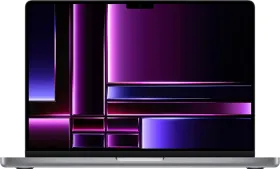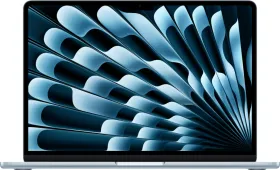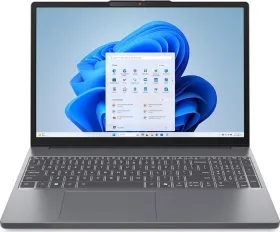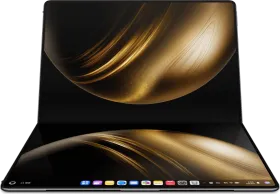TL; DR
- In a major claim related to Apple’s plans, Bloomberg’s Mark Gurman reports how the company plans to rename all the operating systems.
- At the WWDC 2025 (June 9), Apple will unveil iOS 26 along with other operating systems like iPadOS 26, macOS 26, watchOS 26, tvOS 26, and visionOS 26.
- Changing the naming schemes of the operating system will make the names easier to remember by bringing consistency across the lineup.
For a while now, we’ve been aware of the major visual overhaul coming to Apple’s operating systems for various devices, including iOS, iPadOS, and macOS. Initially, the company was expected to reveal the changes for iOS 19 and iPadOS 19, as they were about to succeed iOS 18 and iPadOS 18, along with the other current-generation operating systems.
However, in a major claim related to Apple’s plans, Bloomberg’s Mark Gurman reports how the company plans to rename all the operating systems. Until now, they had been following a numerical naming convention wherein a specific number denoted each version. For instance, the latest iOS version available as of May 29, 2025, is iOS 18.5, where ’18’ represents the version number and ‘.5’ represents the iteration within that version.
Also Read: New iPhones, Macs, & More: Apple’s Massive 2025 Product Lineup
Apple’s Upcoming Operating Systems To Be Named After Years

Going forward, the Cupertino giant plans to adopt a year-based naming scheme, wherein the iOS version will be named after the forthcoming year, i.e., the year in which most of its updates will be rolled out. Building on that logic, the upcoming operating system version, which will be unveiled at the Worldwide Developers Conference (WWDC 2025), will be designated as “iOS 26.”
You read that right. At the WWDC 2025 (June 9), Apple will unveil iOS 26 along with other operating systems like iPadOS 26, macOS 26, watchOS 26, tvOS 26, and visionOS 26.
For those catching up, the current lineup of Apple operating systems consists of iOS 18, iPadOS 18, macOS 15, tvOS 18, watchOS 11, and visionOS 2. While those keeping track of all the different versions and updates can remember the various names, it eventually becomes confusing, even for the best of us.
Also Read: Apple to Split iPhone Launches Starting 2026, Base Models to Arrive Separately in Spring
Why Is Apple Renaming Its Operating Systems?

Hence, changing the naming schemes of the operating system will make the names easier to remember by bringing consistency across the lineup. While the visual overhaul was also focused on unifying the user interface across the operating systems, the consistent naming scheme is yet another step in that direction.
As mentioned in Gurman’s report, the change will “bring consistency to its [operating systems’] branding and move away from an approach that can be confusing” to both developers and end consumers. And the new naming scheme won’t just apply to this year, as the company plans to follow it for years to come.
So, at the WWDC in 2026, Apple could unveil iOS 27. If you’re having some trouble understanding this, think of it as how Western automakers name their vehicles. The ‘2026’ version of the car is the one that will sell throughout 2025, and then, in 2026, the brand will release the ‘2027’ version of the vehicle.
SmartPrix’s Take On iOS 26

While Gurman has an excellent track record, rebranding the entire software lineup is too big of a step to take as a rumor. I suppose a small part of us will wait until the WWDC 2025 keynote on June 9 to confirm whether Apple will actually unveil iOS 26 instead of iOS 19.
We’ve seen the Korean tech conglomerate Samsung shift to a year-based moniker for its flagship Galaxy S series. After unveiling the Galaxy S10 lineup in 2019, the company released the Galaxy S20 in 2020. Earlier this year, we had the opportunity to spend some time with the Galaxy S25 series, whose name coincides with the year it was released, making it easier for consumers to quickly identify the latest product and differentiate it from older models.
By changing the names of its operating systems, Apple aims to achieve a similar goal: enhancing ease of identification among consumers, developers, and stakeholders. Obviously, the change will also make it easier for us journalists to remember and write about the different operating systems without having to double-check the current version every time there’s confusion.
Also Read: WWDC 2025: iOS 19 To Feature Major UI Overhauls, With iPadOS 19 and macOS 16; Report
Could the change also apply to the upcoming iPhones? If that happens, we could get the iPhone 26 and not the iPhone 17 in September 2025. Again, that’s just a conjecture, and there’s no solid rumor or evidence to back it at this point. Either way, iOS 26 is definitely going to be a pivoting point in the operating system’s history, and we’re excited about the changes Apple has in store for everyone.
You can follow Smartprix on Twitter, Facebook, Instagram, and Google News. Visit smartprix.com for the most recent tech and auto news, reviews, and guides.

































